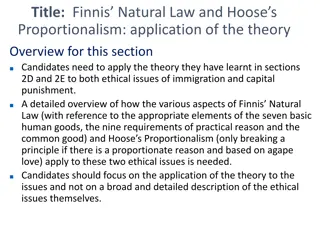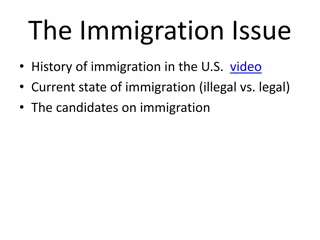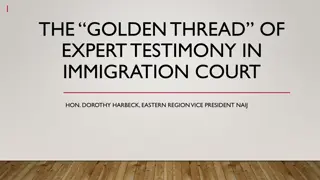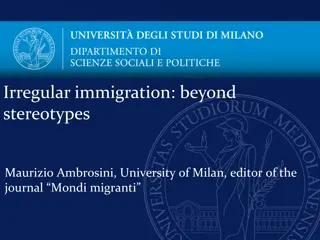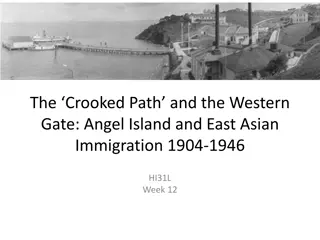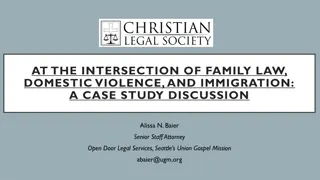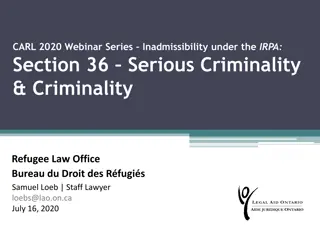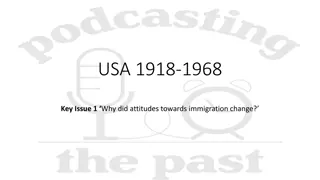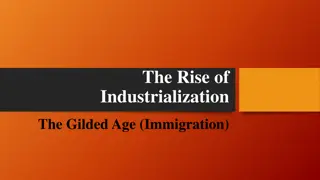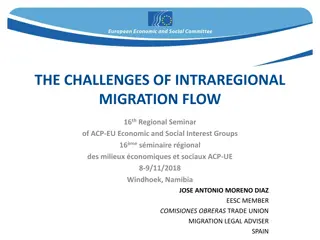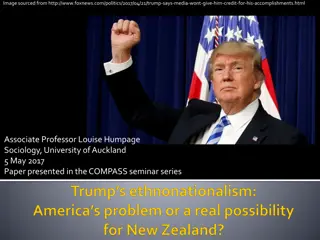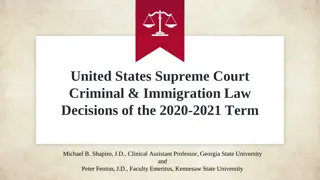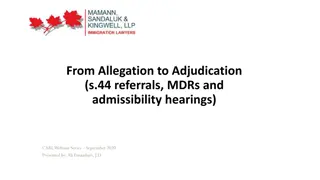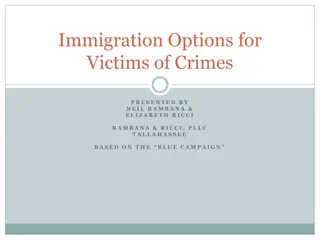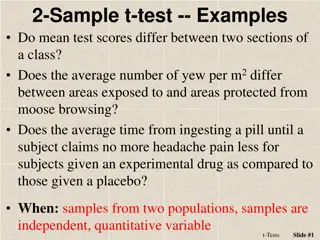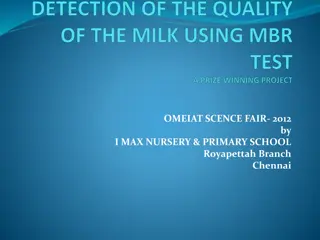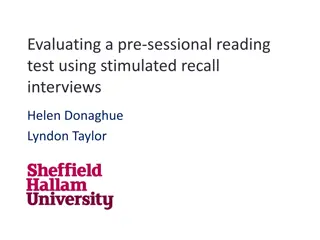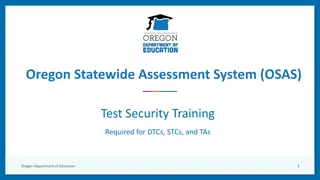Understanding the Unduly Harsh Test in UK Immigration Law
The Unduly Harsh Test in UK immigration law is crucial when considering deportation cases. It involves assessing whether deporting an individual would result in undue harshness based on their circumstances, such as long-term residency or family ties in the UK. Recent cases like AA Nigeria have shaped the interpretation of this test, with key cases including KO Nigeria and HA Iraq. The test requires a comparison of harshness levels and justifiability in context.
Download Presentation

Please find below an Image/Link to download the presentation.
The content on the website is provided AS IS for your information and personal use only. It may not be sold, licensed, or shared on other websites without obtaining consent from the author. Download presentation by click this link. If you encounter any issues during the download, it is possible that the publisher has removed the file from their server.
E N D
Presentation Transcript
Islam Khan Church Court Chambers Deportation and Unduly Harsh Test
Where are we on the test of Unduly Harsh In answering that question: Where does the requirement of Unduly Harsh come from: Defences to Deportation
Defences or exceptions to deportation - Section 32 UK Borders Act 2007 engages an order to deport, whilst the exceptions can be found at section 33 of the same act; Section 34 deals with timing and 35 with appeals. These are amended by the Nationality and Immigration EU Exit Regulations 2019. - If human rights on Article 8 ECHR is raised then this is subject to the exceptions in section 117C of the 2014 Immigration Act which states:
C has been lawfully resident in the United Kingdom for most of Cs life, C is socially and culturally integrated in the United Kingdom, and there would be very significant obstacles to C s integration into the country to which C is proposed to be deported. genuine and subsisting relationship with a qualifying partner, or a genuine and subsisting parental relationship with a qualifying child, and the effect of C s deportation on the partner or child would be unduly harsh. - - - - unless there are very compelling circumstances, over and above those described above - (i) This is mirrored in the Immigration rules at part 13, rule A398 - 399
AA Nigeria is the latest case that comprehensively reviews the case law on the test of unduly harshness. At para 9 it identifies the 4 main cases that discuss the test of unduly harsh. They are: KO Nigeria Kiarie and Byndloss NA Pakistan and HA Iraq The test of whether it would be unduly harsh to violate a persons rights will be based cumatively on the merits of the facts of each case.
Definition - In the light of AA Nigeria the Unduly Harsh test is now confined to KO (Nigeria) and HA (Iraq) until there is a another decision to actually overrules it. Lets break this down in two parts. The first what is Unduly The definition of unduly harsh can be found at paragraph 10 of AA Nigeria, where it states: .. the word unduly implies an element of comparison. It assumes that there is a due level of harshness , that is a level which may be acceptable or justifiable in the relevant context. Unduly implies something going beyond thatlevel ..One is looking for a degree of harshness going beyond what would necessarily be involved for any child faced with the deportation of a parent. In my view its an acceptable level of harshness, not that harshness is acceptable, in the relevant context and is justified. give an example hot weather
Definition And the second part is What is Harsh . At paragraph 11 LJ Popplewell refers to J McCloskey s decision of in the case of MK Sierra Leone stating: . By way of self-direction, we are mindful that unduly harsh does not equate with uncomfortable, inconvenient, undesirable or merely difficult. Rather, it poses a considerably more elevated threshold. Harsh in this context, denotes something severe, or bleak. It is the antithesis of pleasant or comfortable. Furthermore, the addition of the adverb unduly raises an already elevated standard still higher.
Definition At paragraph 12 LJ Popplewell goes onto say: [12] As explained in HA (Iraq) at [44] and [50] to [53], this does not posit some objectively measurable standard of harshness which is acceptable, but sets a bar which is more elevated than mere undesirability but not as high as the very compelling circumstances test in s.117C(6). Beyond that, further exposition of the phrase unduly harsh is of limited value. Moreover, as made clear at [56]-[57], it is potentially misleading and dangerous to seek to identify some ordinary level of harshness as an acceptable level by reference to what may be commonly encountered circumstances: there is no reason in principle why cases of undue hardship may not occur quite commonly; and how a child will be affected by a parent s deportation will depend upon an almost infinitely variable range of circumstances. It is not possible to identify a baseline of ordinariness
Definition - The additional assessment to qualify IN meeting that test of unduly harsh it apply the test in HA Iraq. What maybe unduly harsh and commonly accepted by one individual may not be the same commonly accepted due level of harshness for another. It will depend upon a variable range of circumstances without having a baseline. - The definition is very wide that allows for a variable range of circumstances. - To sum up where we are on the Unduly Harsh test. The assessment in AA Nigeria - I put it as my own words it is an elevated level of seriousness something which goes beyond what would necessarily be involved depending on the variable range of circumstances. And I wait to see a court taking my suggestion into account.
Other factors in AA Nigeria an important principle is the fact that the Court criticised the Upper Tribunal for thinking that its members could themselves set aside the FTT because they have their own different conclusion. At para 41: ..Upper Tribunal has interfered merely on the grounds that itsmembers would themselves have reached a different conclusion. That isimpermissible .. Read passages of para 41 .
Para 42 gives guidance on how the test should be applied: I would not treatUT Judge Smith as having found that the consequences would be any more thanharsh. However, her reference to the fact that they may be very harsh wasunhelpful. Tribunal judges should not seek to express their decisions by categorisations of degrees of harshness, which is to complicate what is a single and straightforward statutory test. They should identify the factors which are relied on asmaking the consequences of deportation unduly harsh and evaluate whethercumulatively they do so, bearing in mind that it is an elevated threshold, and that, asHA (Iraq) explains, it is undesirable to approach the issue by trying to identify whatis the norm and what in the individual case goes beyond that: almost all cases aredifferent, involving a multitude of individual factors, and it is impossible to measureobjectively a norm or baseline as the comparator against which the individual case isto be judged.
So the question is what is an error of law - I think my time is up and we leave this issue of error of law for another day. I am happy to take any questions on email at i.khan@churchcourtchambers.co.uk or to Asad is fine.


